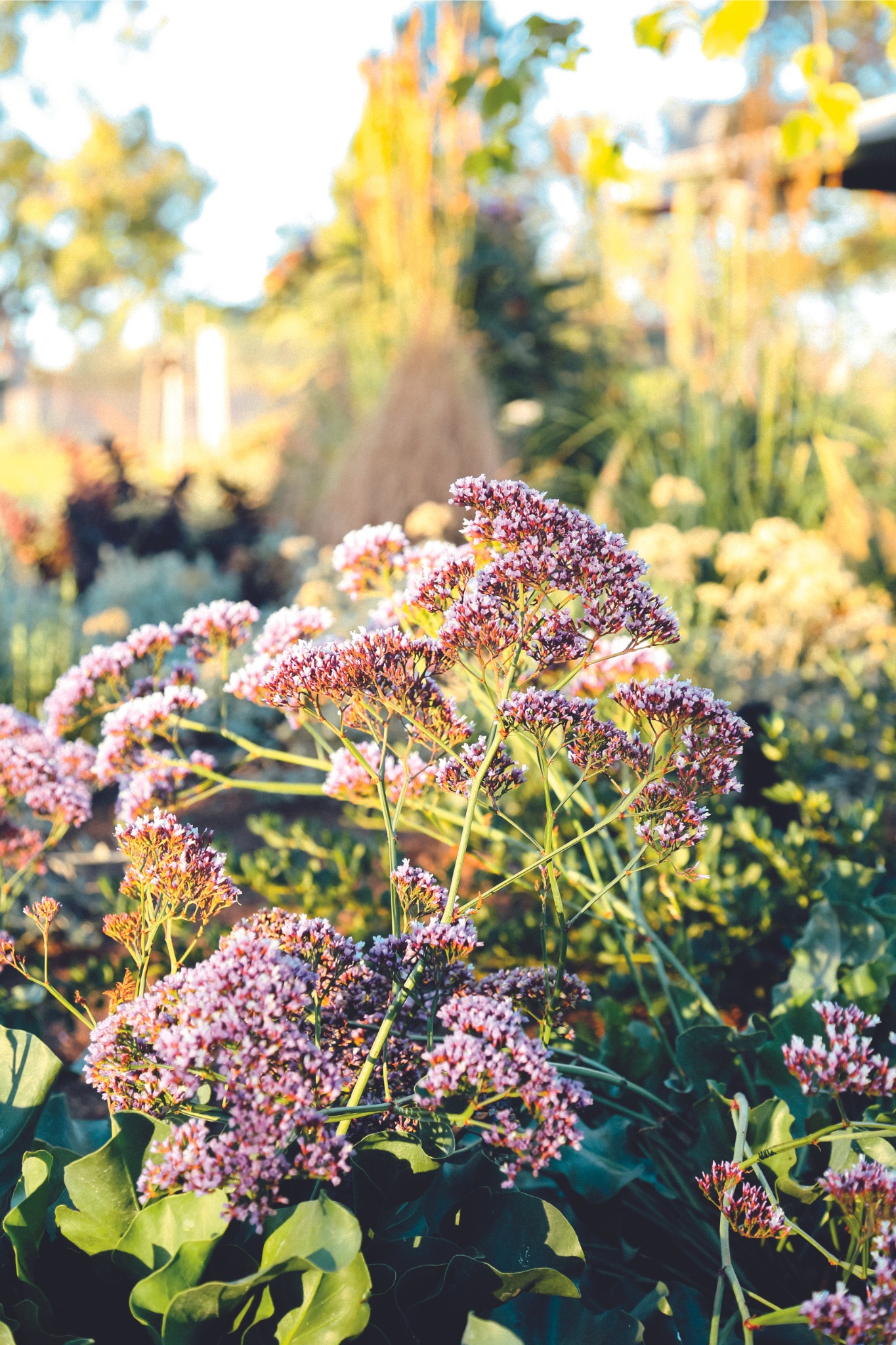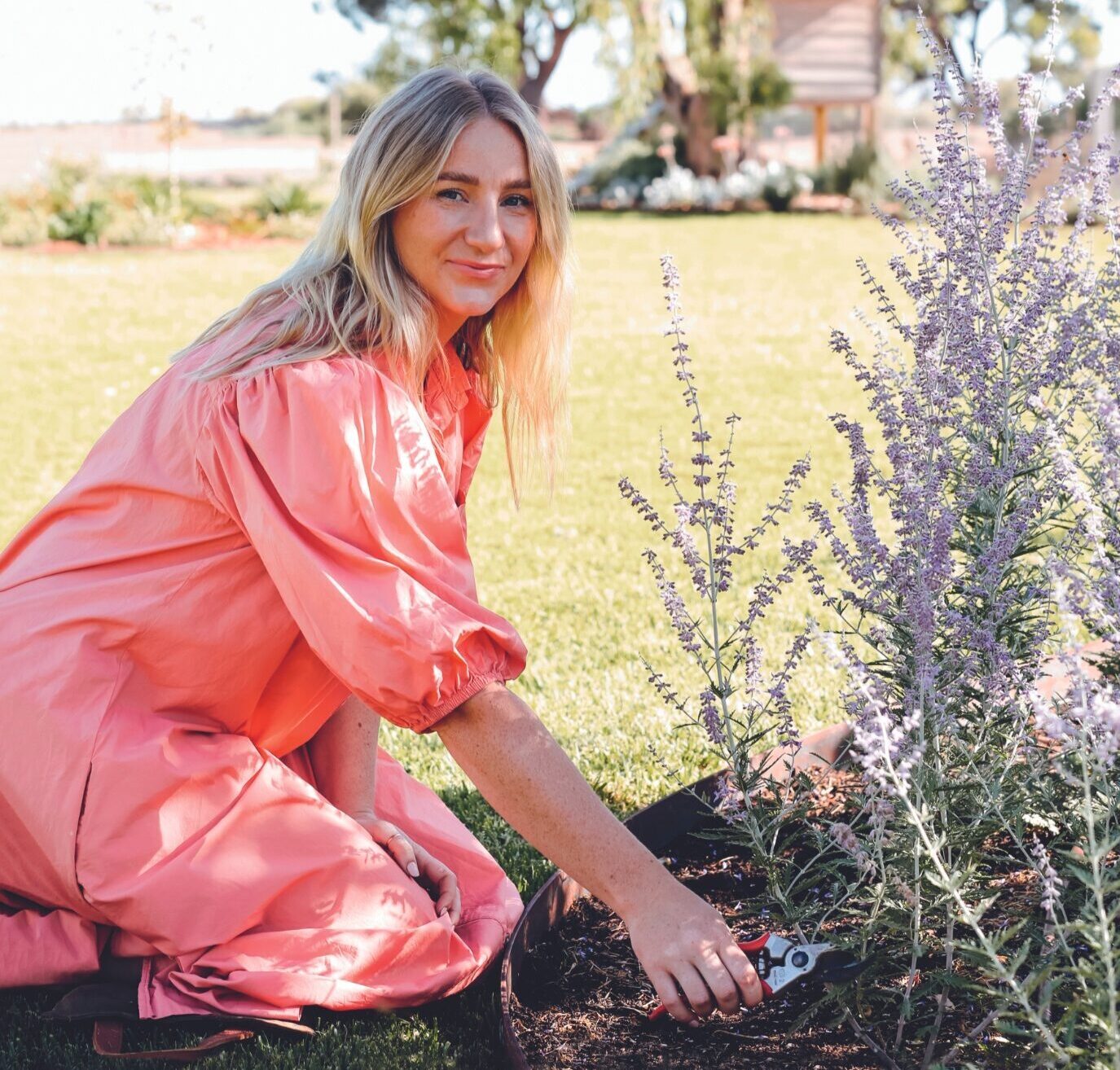Sign up to our mailing list for the best stories delivered to your inbox.
Outback gardener Cassandra Hooke talks best bets for hedging, easy-care plants and improving clay soils.
WORDS CASSANDRA HOOKE PHOTOGRAPHY EMMA CROSS


I live just outside of Toowoomba. We have a big timber front fence where we want to plant something to give us more privacy. The plants need to be frost and drought hardy as well as low maintenance. The garden edging gives us a bed width of 1 metre. Can you please recommend something for this space, with flowers if possible?
Maree Scutt, Toowoomba, Queensland
A continuous evergreen hedge is not on everyone’s wish list and if everyone had the same idea for screening off an undesirable view it might all get a little samey. An evergreen plant retains its foliage all year round, unlike a deciduous plant that will go through a shedding process called abscission, usually during winter in temperate climates, although some will go through this process during the dry season in arid or tropical regions. As plants begin to lose their green pigment (chlorophyll) during this process, what is left behind are the pigments you associate with autumn: yellow and red.
Evergreen plants make for a natural option for screening. Hardy plants such as olive, buddleia, westringia, Syzygium (lilly pilly), crepe myrtle, clumping bamboo, viburnum, Leptospermum (tea tree) and oleander all make great screening plants of varying heights that can cope with your local climate. If you are challenged for space, using a climber such as Pandorea (wonga wonga), climbing ficus or Hardenbergia is a good way of disguising a fence while given the illusion of a larger, deeper garden.
If you’re blessed with lots of space, layering plants or staggering them in groups can help keep things from being a monoculture and add visual interest. You may do this by having a continuous medium-height informal hedge (such as rosemary), then adding few small evergreen trees (such as tuckeroo) underplanted with clumps of irises or Tulbaghia (society garlic).
Cassandra talks to Graziher’s Life on the Land about her love of gardening. Article continues below.
We have an empty garden bed, located in full sun and about 1 metre wide with a raised lawn section behind. Suggestions on something low maintenance and ideal for the climate here would be great. I considered putting in Pittosporum ‘Golf Ball’, but I’m not sure whether they are appropriate.
Annie Matthews, Forbes, New South Wales
Pittosporum tenuifolium ‘Golf Ball’ has a naturally dense, rounded habit and therefore requires minimal pruning. Due to its paler foliage, I would suggest planting it alongside some deeper green plants, such as a small variety of Dianella (flax lily), prostrate rosemary or a darker-leafed Crassula. Long-flowering plants such as convolvulus, Loropetalum (fringe flower) and Brachyscome (native daisy) can bring beautiful colour to the garden. If you are after something with a little more height, there are many varieties of Prostanthera (mint bush), Correa (native fuchsia) and Eremophila (emu bush) that are hardy and low maintenance.
Setting up a simple dripline irrigation system on a tap timer, will ensure that the plants get adequate water while keeping maintenance to a minimum.
We live on lovely natural sandy loam soil. I extended the garden fence and my husband offered to bring some dirt up to even out a big low-lying area in the new space. The soil is heavy clay from the paddock. I’m wondering whether to persist, add gypsum and manure, or just dig out the garden bed with a bobcat and start afresh with top soil.
Laura Noble, Blackall, Queensland
Gypsum improves the structure of clay soils and comes in liquid or powder form. It is not an instant remedy and takes several months to take effect. It is best used in conjunction with organic matter, which will also improve the soil structure.
The addition of more suitable well-draining soil and composted organic matter won’t hurt and would help broaden your plant selection. In the lower areas of my garden, I built up garden beds by a fraction, but I’ve struggled with drainage and plant loss from waterlogging in these areas.
Clay soils have poor drainage and can waterlog plant roots; the soil also dries very hard and compact, further impacting the roots. Clay is not all bad, though, as it retains moisture well and is nutrient dense. When planting in clay soils, ensure good root contact by improving the soil as above, and also watering in well after planting. If you are concerned about trapping water by building the garden bed up further, you may be able to create a break in the bed where water can freely drain away.
Please send your questions for Cassandra, with Gardening Q&A in the subject line, to hello@graziher.com.au
Subscribe to Graziher and never miss an issue of your favourite magazine! Already a subscriber? You can gift a subscription to someone special in your life.
To hear more extraordinary stories about women living in rural and regional Australia, listen to our podcast Life on the Land on Apple Podcasts, Spotify and all major podcast platforms.

What began as a postcard-perfect country wedding soon became a story of survival, strength, and the unshakable heart of rural Australia.

Current custodian Penny Lamont says the heritage garden is designed for easy-care and dry times.